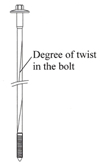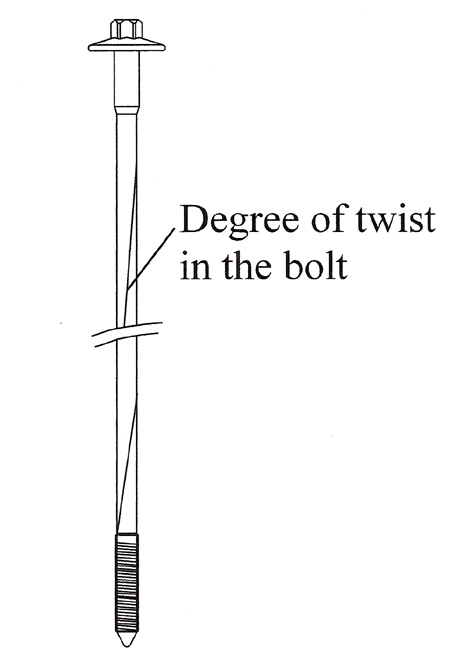The parable of the cylinder head bolt
 Once there was a young engineer. Experienced in the stripping and rebuilding of traditional internal combustion engines, the assembly and testing of his first prototype design looked set to be a particularly enjoyable challenge and something he was anticipating with great relish. The first in a series of concept designs, the engine used a system of longer than normal cylinder head bolts clamping the conventional cylinder head to the cylinder block. In doing so, much of the upper portion of the cylinder block was placed into compression (rather than tension), and it was considered that a lighter structure could be used.
Once there was a young engineer. Experienced in the stripping and rebuilding of traditional internal combustion engines, the assembly and testing of his first prototype design looked set to be a particularly enjoyable challenge and something he was anticipating with great relish. The first in a series of concept designs, the engine used a system of longer than normal cylinder head bolts clamping the conventional cylinder head to the cylinder block. In doing so, much of the upper portion of the cylinder block was placed into compression (rather than tension), and it was considered that a lighter structure could be used.
At first the flatness of the cylinder head fire face was established using a granite surface plate as a reference and lever indicator, and was found to be both damage-free and within tolerance. Attention then turned to the cylinder liners. Upon arrival into the stores, each liner was checked for roundness and cylindricity, and the lower and upper faces of the locating flange checked for axial run-out. The lower face of the flange was then 'blued' and the liners placed into their respective positions inside the cylinder block (which had been previously checked for any burrs or machining errors), rotated and removed for inspection.
Once all was well, the liners were replaced, carefully noting their exact position and measuring the precise liner 'stand-off' from the top of the cylinder block. Satisfying himself that the gas-filled fire rings were of uniform size all round, the cylinder head was dropped onto the locating dowels, the bolts inserted and the tightening procedure commenced.
Working from the middle cylinders outwards, the bolts were progressively tightened in turn to minimise distortion then finally brought up to the design torque followed by turning a specific angle (often known as 'angle' tightening) to bring the bolt into yield. This was considered to be a more accurate way of establishing an accurate tension in the bolt (and hence clamp load) than using the torque value alone.

Having completed the assembly and sitting back to congratulate himself, one thing was immediately obvious - something the young man was amazed to see. This engine, you see, was only a concept unit intended for rig testing, with little attention having been paid to enclosing the bolts within the cylinder block, as is normally the case. So when the young man looked at the bolts he could see that they had actually twisted by a considerable amount.
It was at this point that a magical thing happened. For no apparent reason, and sitting in the middle of a spotlessly clean and air-conditioned room, he heard what could only be described as a 'pinging' noise, then another nine similar noises, reminiscent of a machine gun. Taking another close look he could see that the bolts had actually unwound themselves and were once again untwisted.
Now you could ask what all this has to do with sealing. The short answer is 'everything', for that pinging noise was indeed the bolts unwinding themselves in response to some slight disturbance and releasing the clamp load of the cylinder head against the fire ring seal. The culprit, it would appear, was the high levels of friction under the heads of the cylinder head bolts, which had prevented the full load to be transferred into the bolt, even though the threads had been carefully oiled before assembly.
The moral here is to ensure that the full load is applied through to the fastener and hence into the seal, and that the friction under the head of the fastener has to be minimised. The seal is part of a system. If it is not loaded correctly, how can you expect it to work?
Here endeth the lesson.
Fig. 1 - The twisted bolt
Written by John Coxon